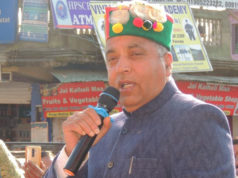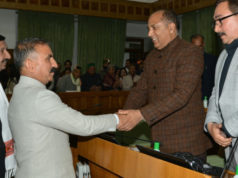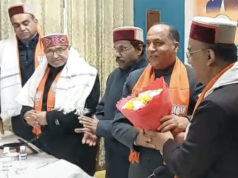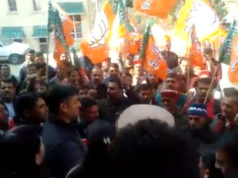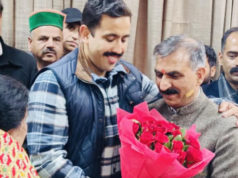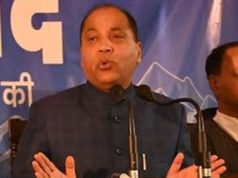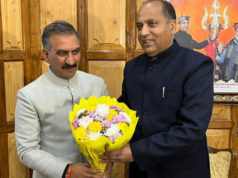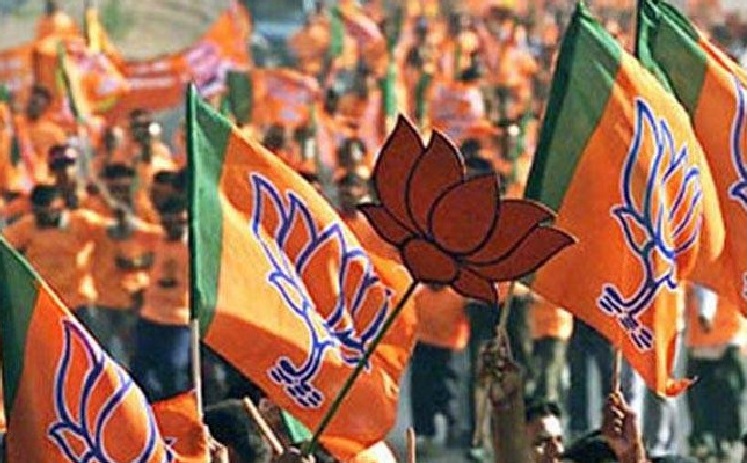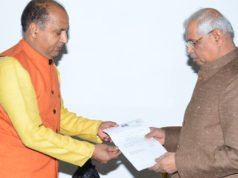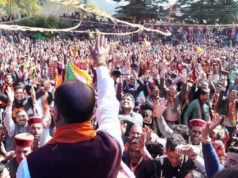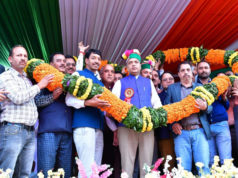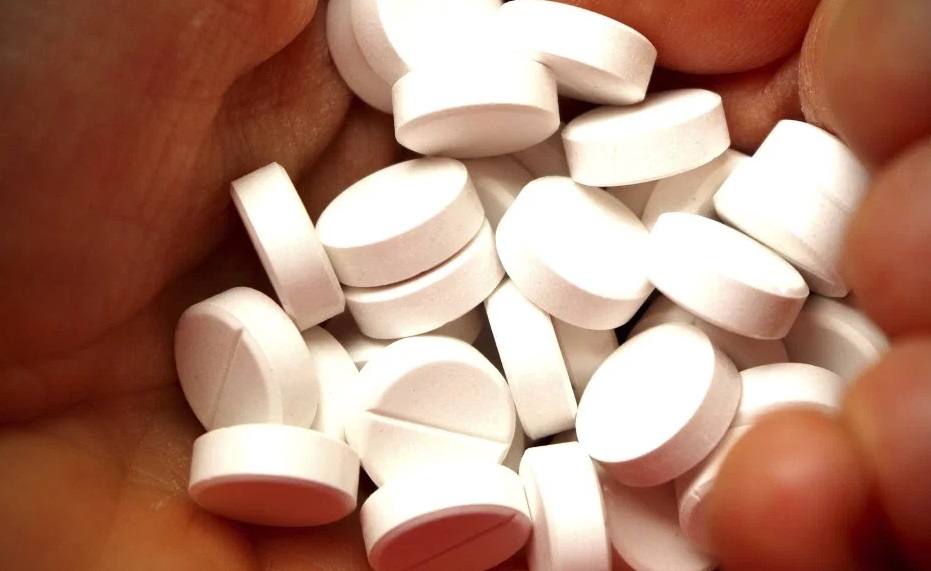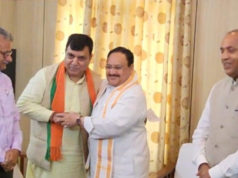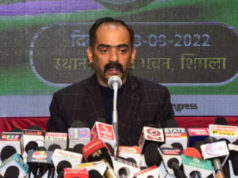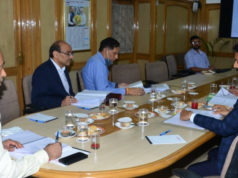Per Capita Income to grow at 4.9 per cent
Shimla: Himachal Pradesh Chie Minister Jai Ram Thakur presented the Himachal Pradesh Economic Survey 2019-20 in the Vidhan Sabha today. As per advance estimate, the rate of growth during 2019-2020 is likely to be about 5.6 per cent as the total GSDP at constant prices is estimated at ₹ 1,24,403 crore against ₹ 1,17,851 crore in 2018-19. At current prices, the GSDP is likely to be around ₹1,65,472 crore approximately against ₹ 1,53,845 crore during 2018-19.
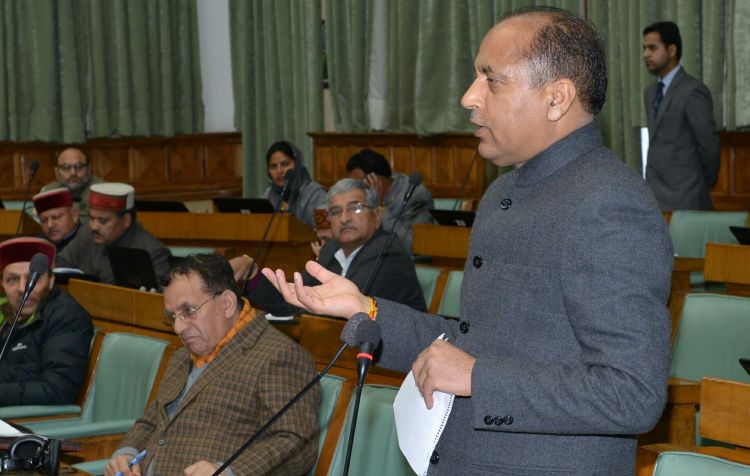
The growth of 5.6 per cent during 2019-2020 is mainly attributed to the Primary sector 9.3 per cent and Community & Personal Services sector 7.7 per cent. The Secondary
sector showed a growth of 3.9 per cent. Due to the increase in horticulture production by 42.82 per cent the overall Primary sector registered a growth of 9.3 per cent which
ultimately shows an overall growth of 5.6 per cent.
Per Capita Income in real terms (at constant 2011-12 prices) for the year 2019-2020 is likely to attain a level of ₹ 1,46,268 as compared to ₹ 1,39,469 for the year
2018-19 showing a rise of 4.9 per cent.
The Per Capita Income at current prices which as per First revised estimates for 2018-19 was ₹ 1,83,108 is likely to increase up to ₹ 1,95,255 during 2019-2020 showing an
increase of about 6.6 per cent.
Agriculture and Allied Sectors
The share of agriculture and allied sectors in the Gross Value Added (GVA) of the State at current prices has declined from 15.35 per cent in 2014-15 to 12.73 per cent in 2019-20. Share of crops, Share of forestry & logging has also declined from 2014-15 to 2019-20, however, Share of livestock and Share of fishing marginally increased. The share of agriculture and allied sectors in the total GVA of the State has been declining on account of relatively higher growth performance of non-agricultural sectors. This is a natural outcome of the development process that leads to faster growth of non-agricultural sectors owing to structural changes taking place in the economy.
Tourism
Himachal Pradesh is a major tourism destination and tourism is contributing greatly to the growth, development and economy of the State. The contribution of the tourism
sector to the State GDP is about 7 per cent which is quite significant. In order to foster economic growth, the reliance on the tourism industry has been observed to deliver positive results. This is attested by the fact that the number of tourists visiting Himachal Pradesh increased from 6.55 million in 2004 to 17.21 million in the year 2019. A further number of guest houses/hotels increased from 2,784 in 2016 to 3,382 in the years 2018 and number of bed capacity increased from 75,918 in 2016 to 91,223 in
2018.
Power
The State of Himachal Pradesh has an estimated Hydro Potential of 27,436 MW out of which 24,000 MW has been assessed as harness able while the Government of
Himachal Pradesh has decided to forgo balance potential in lieu of safeguarding the environment and to maintain ecological as well as protect various social concerns. Out
of the total harnessable potential of about 24,000 MW, potential to the tune of 20,912 MW already stands allotted under various sectors. The State has been accelerating the
pace of Hydropower development through the active involvement of both the public and private sectors. A potential of about 10,596.27 MW has already been harnessed so far
under various sectors
Trends in Industrial Sector
Industrial sector performance in terms of its contribution to Gross State Value Added (GVA) has slightly decreased in 2018-19 over 2017-18. The contribution of
Manufacturing Sector in Gross State Value Addition (GSVA) at Current Prices is increasing every year, as it has increased from 26.69 per cent in the year 2014-15 to
29.79 per cent in the year 2018-19, due to State Government’s initiatives such as Proactive Industrial policy, Incentives to investors, enabling Ease of Doing Business to attract Investment etc. The contribution of Mining & Quarrying Sector in Gross State value addition (GSVA) at Current Prices has increased marginally, as it has increased
from 0.33 per cent in the year 2014-15 to 0.53 per cent in the year 2018-19, due to the reason that other sectors of the economy have been contributing more and also due to
stringent action to check illegal mining by the State Govt.
Investment, especially private investment, is the “key driver” that drives demand, creates capacity, increases labour productivity, introduces new technology, and generates jobs. Increased private investment made in response to existing markets or emerging opportunities – create new jobs, which increases local income, which leads
to greater local demand for goods and services, which in turn leads to more private sector investment and thus continues the cycle of growth.
Current Trends in Inflation
In Himachal Pradesh, inflation has been witnessing moderation since 2014-15. Headline Consumer Price Index-Combined (CPI-C) inflation was 2.5 per cent in 2019-20 as compared to 6.2 per cent in 2014-15. Wholesale Price Index (WPI) inflation has seen an increase between 2015-16 and 2018-19, it fell from 4.7 per cent in 2018-19 to 1.5 per
cent during 2019-20.
Trends in Expenditure on Social Services
Investment in social infrastructure is a pre-requisite for inclusive growth and employment. The Government’s commitment to social well-being is a major highlight of the Economic Survey 2019-20. As per the Economic Survey, the expenditure on social services by the State Government increased from ₹ 7,973 crore in 2014-15 to ₹15,156 crore in 2019-20 (Budget Estimate). As a proportion of Gross State Domestic Product (GSDP), the expenditure on social services has registered an increase of 1.48 percentage points during the period 2014-15 to 2019-20 from 7.68 to 9.16 per cent. The expenditure on education, as a percentage of GSDP increased from 4.12 per cent to 4.75 per cent between 2014-15 and 2019-20 (BE). Similarly, expenditure on health increased from 1.25 per cent to 1.66 per cent during the same period as a percentage of GSDP.
Fiscal Developments
The State Government mobilizes financial resources through direct and indirect taxes, non-tax revenue, share of central taxes and grants-in-aid from Central Government to
meet the expenditure on administration and developmental activities. According to the budget estimates for the year 2019-20 (BE) the total revenue receipts are estimated at ₹
33,747 crore as against ₹ 31,189 crore in 2018-19(RE) showing an increase of 8.20 per cent.
The State’s own taxes increased to 15.69 per cent in 2019-20 (BE) which is estimated at ₹ 7,921 crore as against ₹ 6,847 crore in 2018-19 (RE) and ₹ 7,108 crore in 2017-
18(A).
The State’s non-tax revenue (comprising mainly of interest receipts, power receipts, road transport receipts and another administrative service etc.) are estimated at ₹ 2,443
crore in 2019-20(BE), which is 7.24 per cent of total revenue receipts of 2019-20.
According to Budget Estimates of 2019-20, the tax revenue (including central taxes) is estimated at ₹ 15,319 crore as against ₹12,277 crore in 2018-19 (RE) which are 24.78
per cent more than the revised estimates of 2018-19, which stands at 9.26 per cent of GSDP.
As per the budget estimates the Revenue receipts of the Government for the year 2019-20 are estimated to be 20.39 per cent of the GSDP which were 20.27 per cent in
2018-19 revised estimates. Similarly, the tax revenue for the year 2019-20 is estimated at 9.26 per cent of GSDP as compared to 7.98 per cent during 2018-19. Non-tax revenue
is 1.48 per cent of the GSDP in 2019-20 as compared to 1.51 per cent during 2018-19, showing a marginal decrease. Revenue expenditure is likely to increase in 2019-20
whereas the Capital expenditure is likely to decrease as a percentage of the GSDP in 2019.-20.
The fiscal deficit is estimated at 4.44 per cent of the GSDP in 2019-20 as compared to 5.06 per cent in 2018-19. Revenue and Primary deficit as a percent to GSDP is expected to decrease in 2019-20.
The growth in revenue receipts which was 0.72 per cent in 2013-14, is likely to increase to 8.20 per cent in 2019-20, as per Budget Estimates. Tax revenue (including central
taxes) of the government is expected to grow by 24.78 per cent in 2019-20 as compared to 10.19 per cent in 2013-14. Growth of Non-tax revenue decreased to 5.13 per cent in
2019-20 which was 29.63 per cent in 2013-14. According to budget estimates 2019-20, the growth in the total expenditure of the Government is 1.75 per cent as compared to the growth of 3.51 per cent in 2013-14. Revenue expenditure is likely to increase by 8.02 percent in 2019-20. The growth in Capital expenditure is estimated at (-) 6.40 per cent in
2019-20 as compared to (-) 5.06 per cent in 2013-14.


